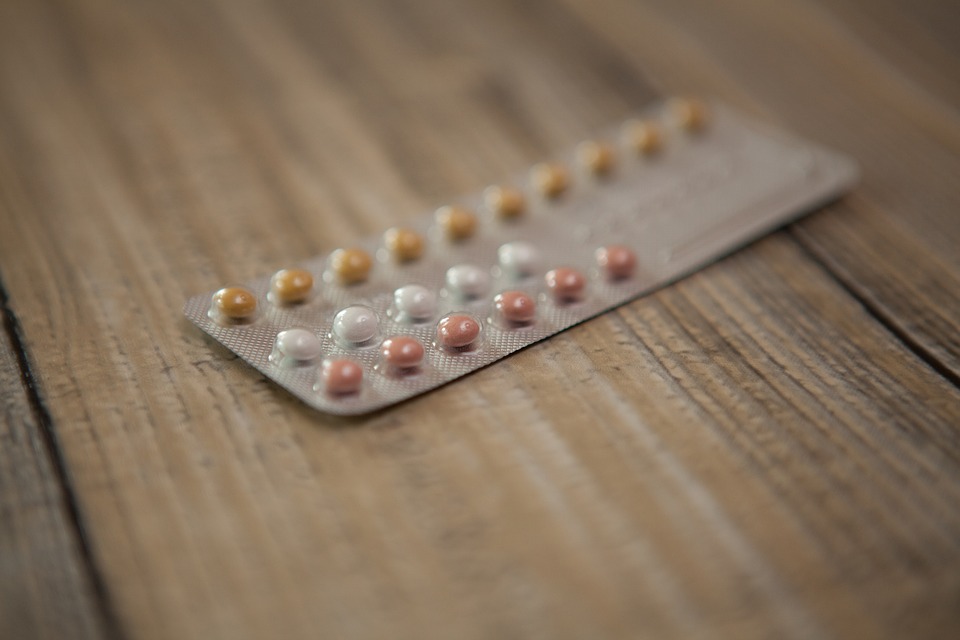16 Male Fertility Treatments
From Natural Remedies and Behavioral Modification to Cutting-Edge Medical Intervention
| It’s easy to think that as the carrier of the baby from conception to birth, moms have a more significant role in family building, but the man is just as important and plays an equal role when it comes to successfully combining egg and sperm. Sperm health is critical to whether an egg is fertilized and develops into a healthy embryo, fetus, and child. But sometimes, it’s just not working for the swimmers. In fact, approximately ½ of all cases of infertility can be attributed solely or partially to male factors[1]. So while fertility treatments often focus on the female, here we are going to cover 16 male fertility “treatments,” from natural remedies to cutting edge therapies and surgical procedures. Ready? Good, let’s get swimming! Natural Remedies and Behavioral Modifications 1. Diet Let’s start with something relatively natural and with minimal medical intervention. Avoiding trans fats and soy products can do wonders for sperm. The phytoestrogens in soy have been shown to damage sperm and trans fats have been associated with reduced sperm counts. On the opposite side of the spectrum, eating Omega 3 Fatty Acids has been shown to increase sperm motility by several studies including a meta analysis done in 2018. Having a well formulated fertility diet provides a sound foundation for sperm health and can take your swimmers quite a long way. 2. Quit Smoking & Tobacco Use Your lungs aren’t the only thing to suffer the effects of regular smoking. A study of 2,562 men found a decline in semen volume, total sperm count, and percentage of motile sperm due to smoking. Heavy smokers had a 19% lower sperm concentration than non-smokers. Ouch! Let’s avoid that mighty shot below the belt and stay away from that toxic smoke. 3. Limit Alcohol Consumption Men looking to father a child do best to limit their alcohol consumption, or better yet, give up drinking altogether. That daily beer or glass of wine after work isn’t such a great idea if you’re trying to get your partner pregnant. Fifteen studies of 16,395 men concluded that daily alcohol intake had a consistently negative impact on sperm morphology and volume, both crucial aspects of sperm health. 4. Exercise In general, exercise can be great for the body. It helps reduce stress, improve circulation, can help you sleep better, and even boosts testosterone levels in men. While movement is key to maintaining strong bones and a healthy body, high-intensity exercise can have the opposite effect on male fertility. This study of men with different exercise practices (ranging from less intense to more intense) found that semen parameters were negatively affected as exercise’s intensity and volume increased. Significantly impacted was sperm morphology. Fertility specialists recommend easing up on your training regimen a bit if you’re actively trying to conceive. 5. Cool It Down ‘Turning up the heat’ can be a good thing when it comes to foreplay, but it’s a bad thing for the scrotum and sperm production. Sperm production, also known as spermatogenesis, occurs in the testicles, which are about 3.5 degrees cooler than the rest of the body. Above-average temperatures can cause sperm damage and affect production. For this reason, fertility experts recommend men trying to conceive avoid hot tubs, saunas, and other high heat environments that may affect the testes’ temperature. Interestingly, according to one study men with fertility problems tend to have testicles that are, on average, about one degree warmer than average. It has long been suspected that scrotal cooling could have a positive impact on male fertility. Several studies have confirmed that lowering the scrotal temperature on a consistent basis may improve sperm health. This study showed an improvement in sperm concentration and total sperm count after 8 weeks of nighttime scrotal cooling. That is why products like the Snowballs Underwear can be an important part of a male infertility treatment protocol. 6. Supplements Most of the vitamins and minerals critical to male fertility health are found in the foods we eat, particularly meat. But there are select nutrients that are very difficult to consume at the levels most men need on a daily basis to optimize sperm health. When this is the case, male fertility supplements are an excellent choice for maintaining your health and fertility. Some key supplements for men include Co-Q10, which has been shown to enhance sperm count/concentrations and sperm motility, Folate, which helps with the development of healthy sperm; and Zinc. Studies show that lower zinc levels increase the likelihood of reduced testosterone levels and sperm count. Similarly, L-Carnitine, Selenium & Vitamin E, and others vitamins. 7. Clomid (Clomiphene Citrate) Typically prescribed to females to induce ovulation, Clomid has recently been used off-label to improve male fertility by increasing sperm count and testosterone levels. This study showed a significant improvement in pregnancy rates for men with oligozoospermia who took Clomid versus men who did not. 8. Low Dose Naltrexone (LDN) Inflammation is a significant cause of infertility in both men and women. Low Dose Naltrexone (LDN) has been shown to balance and regulate the immune system without over-stimulating it and to help with a variety of autoimmune disorders. An overactive immune system is a likely cause of many diseases and inflammation in general. Reducing inflammation can improve blood flow to developing sperm and improve the delivery of nutrients. LDN has also shown promise in treating erectile dysfunction and is used by some fertility specialists to increase sperm parameters. 9. Human Chorionic Gonadotropin (hCG) hCG is the same hormone that women produce when pregnant. It is the hormone that at-home pregnancy tests look for in urine, but it is also used to cause ovulation and treat infertility in women, and to increase sperm count in men. hCG therapy in men is used to treat low testosterone levels that can cause male infertility. hCG stimulates the testicles to produce testosterone and sperm, but it is only available as an injection and can be costly. 10. Human Growth Hormone (HGH) HGH is produced by the pituitary gland and helps regulate muscle and bone growth and sugar and fat metabolism. Research has shown that HGH is vital in the development of healthy sperm and male fertility in general. One study found that HGH helps improve sperm concentration, morphology, and motility in men who are deficient in HGH. There are also supplements available over the counter that have shown some promise in naturally increasing HGH levels. Assisted Reproductive Treatments Most fertility specialists take a “less is more” approach to treating male fertility, advising patients to start with less aggressive treatments first, such as a change in lifestyle, adding supplements, or even some prescription medications. But when this isn’t successful in allowing conception to occur, they will likely suggest proceeding to one of these assisted reproductive treatments. 11. Intrauterine Insemination An Intrauterine Insemination (IUI) – aka Artificial Insemination is a simple procedure during which sperm is collected through ejaculation into a sterile cup, cleaned and concentrated, and deposited into a woman’s uterus using a thin catheter passed through her cervix. IUI gives sperm a head-start by placing it in the uterine cavity, closer to the fallopian tubes. However, it’s still primarily a conductor of the natural conception process and requires healthy, active sperm. IUI can be successful for men with mild factor infertility but is not generally recommended for men with severe sperm problems (e.g., extremely low motile sperm count). 12. In Vitro Fertilization In Vitro Fertilization (IVF) is the treatment of choice when less aggressive approaches aren’t successful. IVF is the most effective treatment available and offers the quickest time to pregnancy. Still, it also requires multiple treatment stages and takes a significant physical and financial toll on prospective parents. IVF involves stimulating the ovaries to produce additional eggs, removing these eggs from the mother, fertilizing the eggs with sperm in the laboratory, and placing usually one but sometimes two embryos back into the carrier’s uterus. 13. INVOCell® For couples who favor a more natural environment for conception (instead of a laboratory), another option to conventional IVF is INVOCELL®. The INVOCELL® is a unique, thumb-sized container where egg and sperm are allowed to fertilize. Egg and sperm are placed in the INVOCELL, which is then placed inside the woman’s vagina to incubate for several days. This process is similar to the conventional IVF; only fertilization and early embryo development occur inside the INVOCELL® device (instead of in an embryology lab). Prior to embryo transfer, the device is removed, and the embryo is transferred to the carrier’s uterus. 14. Sperm Extractions & Retrievals When there is no sperm found in a man’s ejaculate, called azoospermia, this is usually due to a blockage or improperly formed tube that doesn’t allow the sperm to pass. If there are sperm in the testicles, a surgeon can extract enough sperm to be used in Intracytoplasmic Sperm Injection (ICSI), where an embryologist injects a single sperm directly into each egg, in conjunction with IVF. The exact method for the extraction will depend on the man. Surgeons sometimes use a needle to extract from the epididymis (PESA). Tissue can be taken from the testicles (TESA). Or, the testicle may be opened for a larger extraction (TESE). These types of extractions are sometimes used in men who are paralyzed and cannot ejaculate. 15. Sperm Freezing While egg freezing has become quite trendy, men about to receive cancer treatment, begin military deployment, undergoing a vasectomy, or have other concerns about potential sperm health may find banking sperm a great option. The process is quick and straightforward. You’ll meet with a provider and then be taken to a collection room. After collecting your sample, it will be brought to an andrology lab where the sperm will be cleaned, concentrated, and frozen in a liquid nitrogen bath for as long as needed. When you’re ready to use your sperm, it will be waiting for you. 16. Vasectomy Reversal A vasectomy is done as a form of permanent birth control, but life changes. Whether that’s a new partner or simply new goals and priorities, a vasectomy reversal is one of two options to have a biological child for those who have already undergone a vasectomy. The other option is a sperm extraction with IVF as discussed earlier. The Bottom Line Having difficulty conceiving is something you wouldn’t wish on anyone. Fortunately, times have changed. While you used to be subject to your local village fertility witchdoctor, modern science has made some pretty incredible breakthroughs. Whether that’s identifying natural remedies like our super cool Snowballs Underwear or a super scientific medical procedure, there’s plenty of hope and lots to consider. It’s all downstream from here fellas! |












